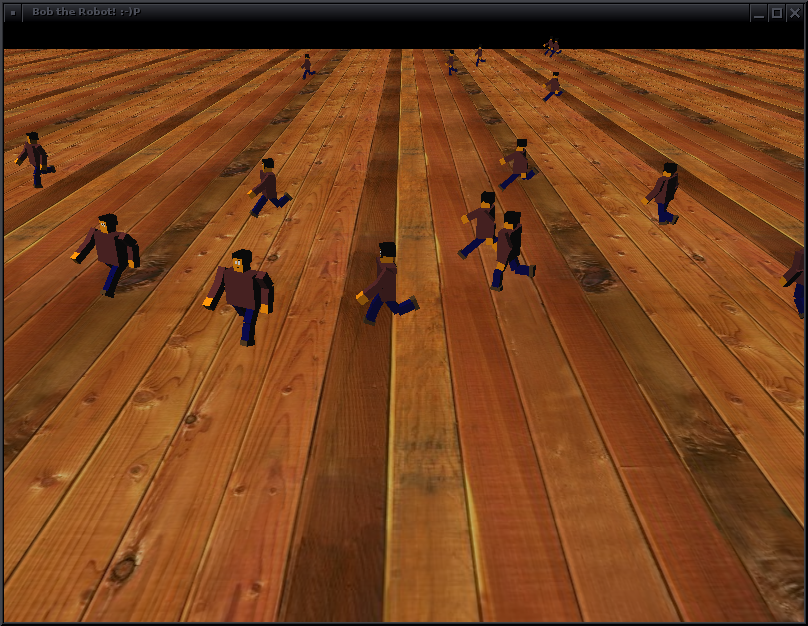Here’s a CT scan viewer I’ve started to experiment with volume rendering:
Tag: opengl
Libgliar: a library that lies to the OpenGL programs about the OpenGL context information
libgliar — a library that lies to the OpenGL programs about the OpenGL context info (for Linux only). Code: bzr branch lp:libgliar
A virtual keyboard
Some days ago I came up with the idea of a keyboard that can be used without having to type the letters. The user just stands in front of a camera and scrolls the letters by moving his head or hands to the appropriate direction…
And here it is:
http://www.youtu.be/JS–z8Cx9sQ
New Stellarium features
As part of the ESA Summer of Code in Space 2011 I improved Stellarium planet rendering (here is a previous post on the project).
More specifically, the following features were added:
1) Procedural perlin noise (fBm) clouds.
2) Bump mapping with normal maps.
The improved rendering code is implemented with GLSL shaders, and requires shader model 3.0 capable graphics hardware.
The following video that shows the effects… (It looks slow because of bad recording, the effects don’t have any impact on Stellarium performance). But you can see the bump mapping and the clouds! 🙂
Many thanks to the Stellarium development team and the ESA SOCIS organization team for giving me the opportunity to participate in the project! 🙂
Stellarium planet rendering improvements.
Here are some screenshots of the new planet rendering in the Stellarium software, implemented as part of the European Space Agency Summer of Code in Space. I implemented a bump mapping algorithm (using normal maps) in GLSL shaders and I integrated it into the Stellarium application (C++). The planets are ellipsoids. There are still many different things to be done for further improving the project, these are just some samples.
(Many thanks to my mentor Fabien Chéreau and the Stellarium development team for giving me the opportunity to participate in the ESA SOCIS, as well as to the organizers of the summer of code!!)*
Screenshots of the moon at night:

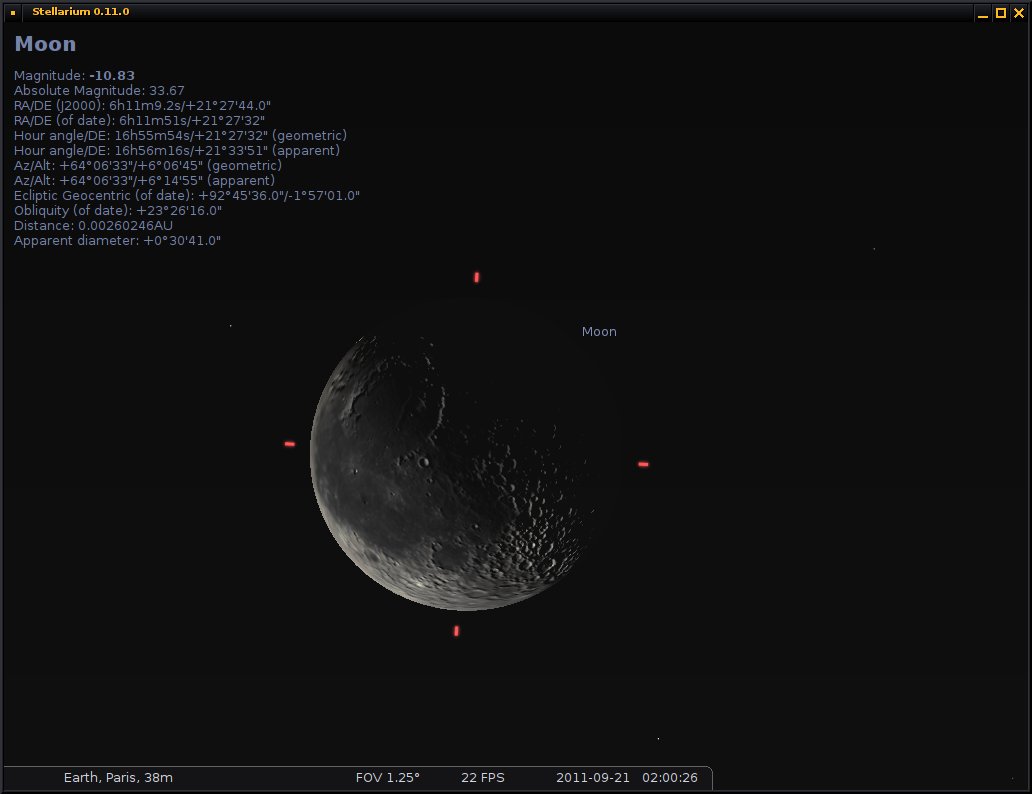
Screenshots of the moon when there’s still daylight:
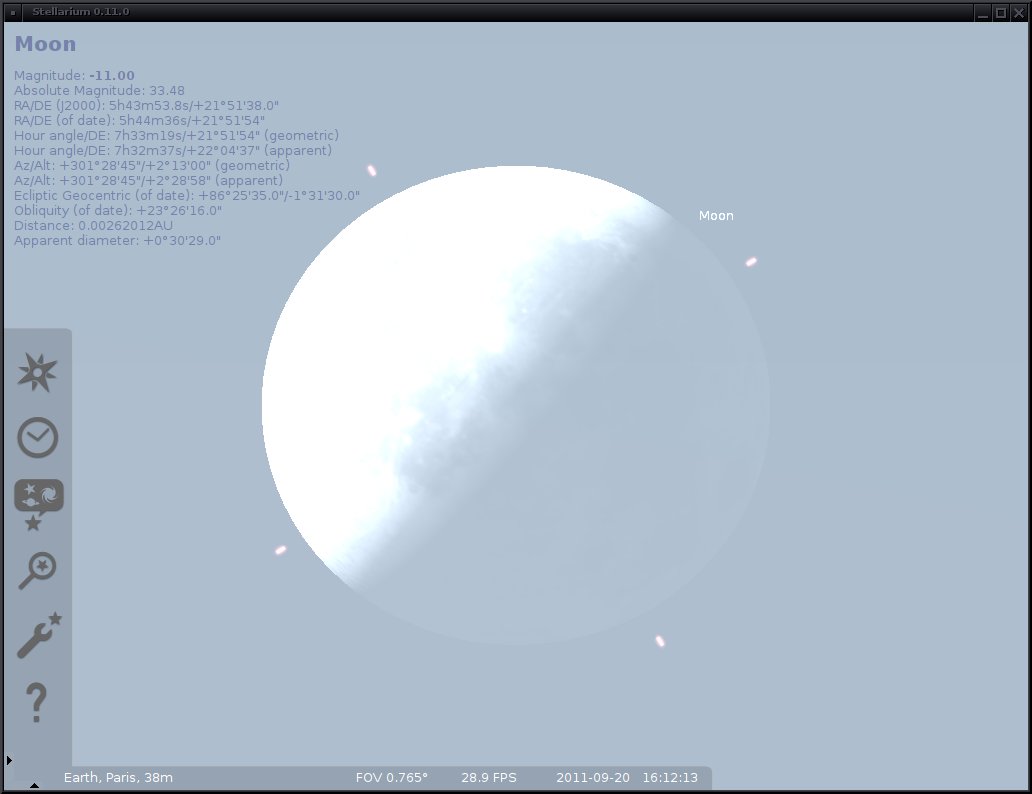
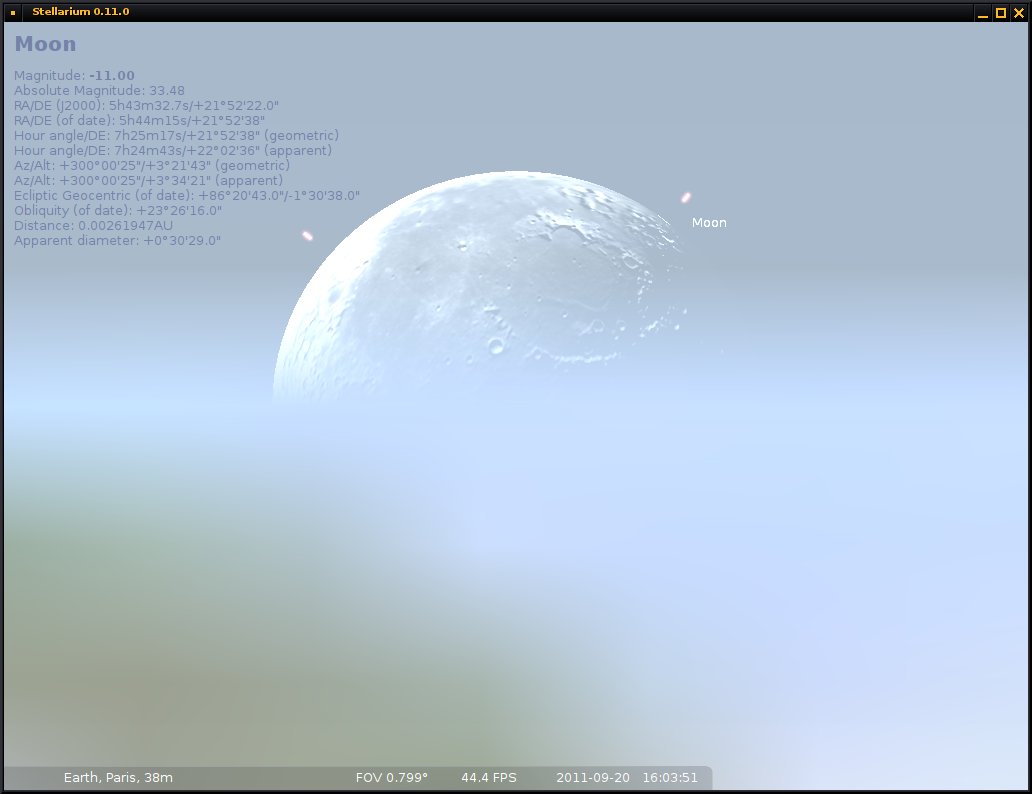
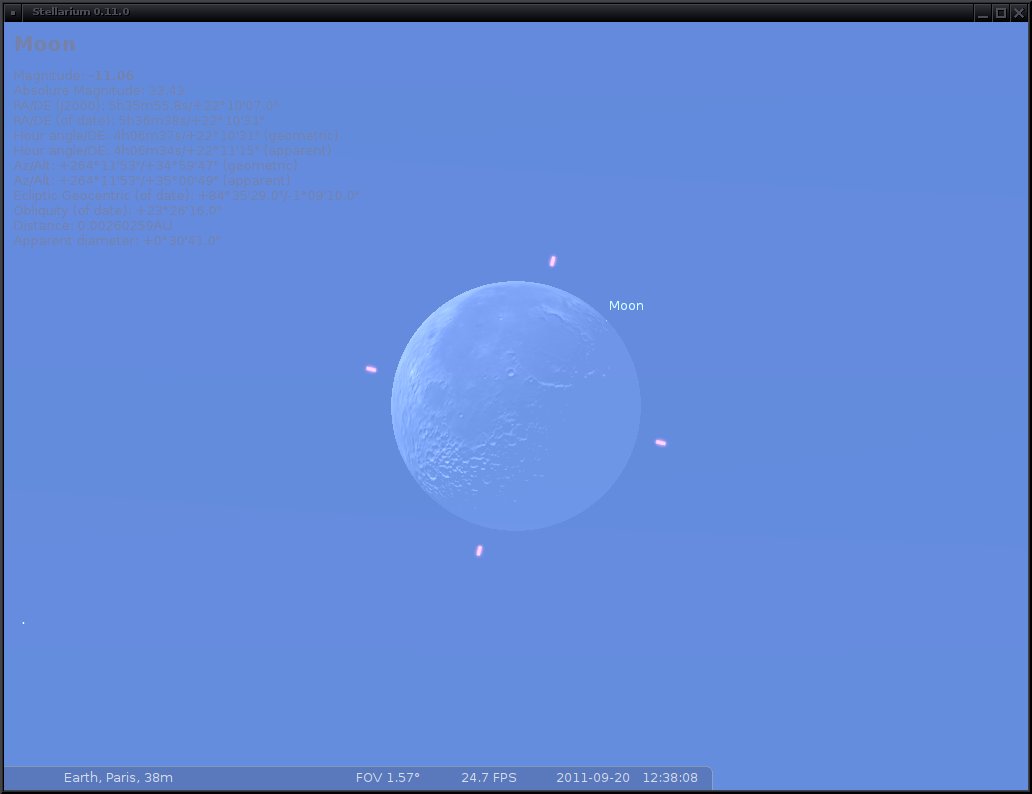
Augmented reality snakeball game
A very simplistic snakeball game (not yet complete) I made for fun using C++, OpenGL and OpenCV 🙂
In the video I use a flashlight to move the cursor and collect the balls that appear at random positions. I track the flashlight by locating the largest and brightest blob on each frame and calculating the center of its bounding rectangle.

